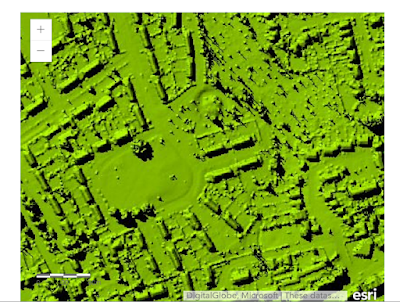FitzHarris castle mound, Abingdon, LiDAR

A residential area of Abingdon in Oxfordshire retains the hint of how the landscape was shaped in the age of William the Conqueror. Land here was awarded to a knight following the Norman invasion of 1066, upon which was constructed a motte and bailey. A small river, the Stert, flowed beside it and served as a moat. The motte and bailey was later abandoned in favour of a medieval house, later known as FitzHarris manor house (or Fitzharry's) built a short distance away. Subsequent developments, including massive expansion of housing in the 20th century, has obliterated much of the old landscape. However that old Norman motte is still there, now largely overgrown by trees and difficult to see. You might not even realize it's there. The LiDAR image below shows the extent of the motte and the clearing some 100 yards away where the grounds of the old manor house used to be (later rebuilt, it was finally demolished in 1953 having fallen into disrepair after the rest of the estate